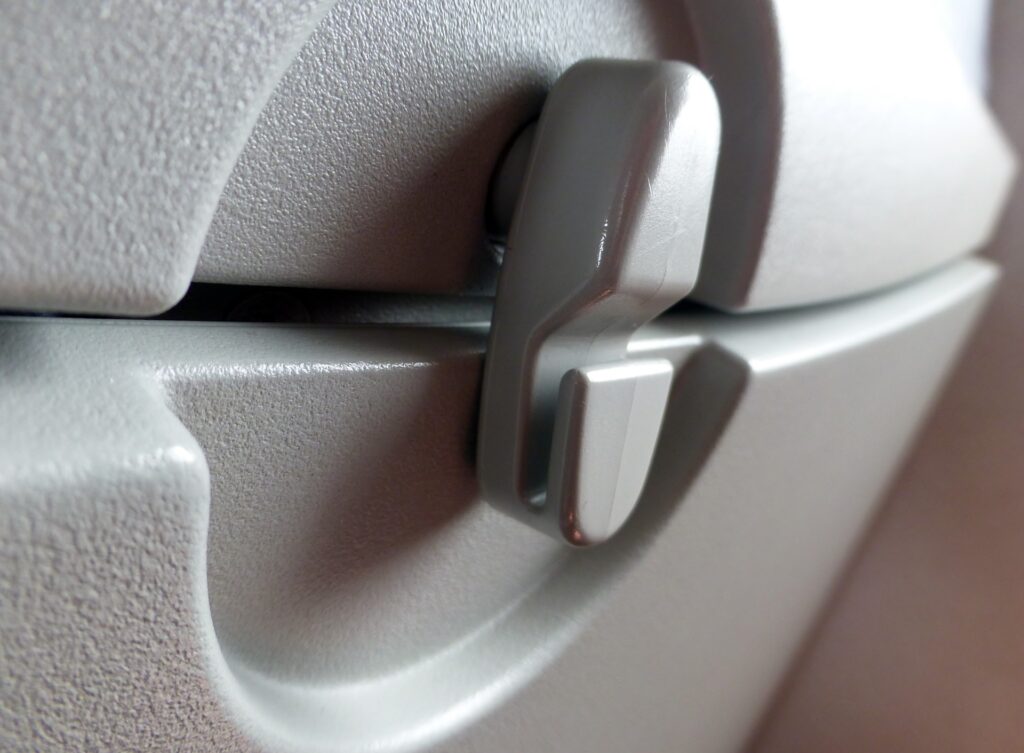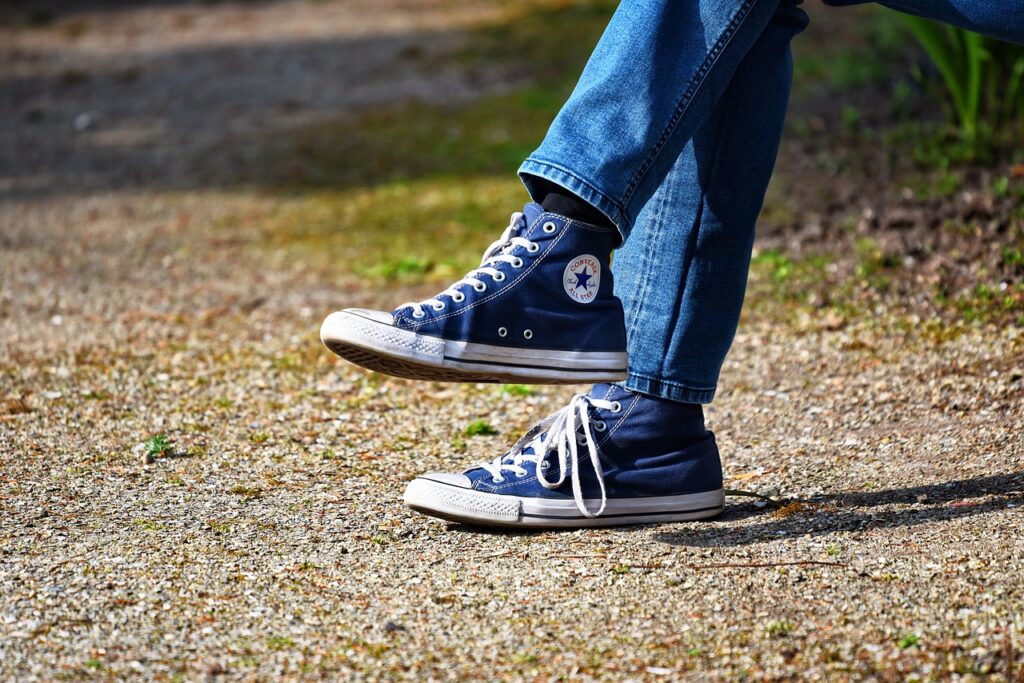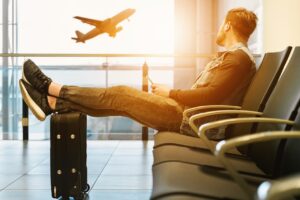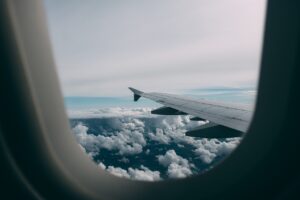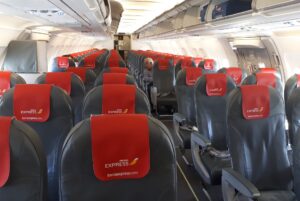Limited leg room, continuous noise, uncomfortable narrow seats, insufficient space for stretching, annoying neighbors, cramped armrests, crying children – the plane is not an ideal place to snooze. No matter how long your flight is, it is always challenging to make travelers feel comfortable. When you are tired during a long flight, nothing is more depressed than insomnia.
This kind of experience puts a lot of pressure on some passengers. It is not easy to sleep next to strangers in such a cramped space. If you have tossed and turned in long-distance flights, you are not alone. But that doesn’t mean you should give up sleeping on a plane. You have bought the best travel pillow and noise-proof headphones, and you want to look well rested and refreshed when you land at your destination, rather than exhausted. Are there any better sleep skills for when you’re up in the air?
[Read more about Sleeping on a Plane]
The biggest issue for most travelers is that it’s hard for them to find an excellent position to take a nap. In order to help you get a good sleep on the next flight, here are some of the most sleep-inducing positions you can take to help you gain some shut-eye on the plane and maximize your sleep time while flying, including the best postures and seats for sleeping in economy class.
Key Positions for In-Flight Sleep
Unless you are sitting in a flat seat that can be extended, you can only lean against on an armrest and a seat that can be tilted a few degrees. This is why your body posture is very important, not only to have a high-quality sleep but also to prevent stabbing pain in your neck or back.
1. Lean Back
The tilted seat is the key to sleeping while flying. Leaning back will help you get into a drowsy state, which is the best sleep position. After takeoff, press the button to tilt the seat to a less upright angle. This is to apply as little pressure as possible on your back and lumbar spine, and the armrests can also relieve the pressure. Use them to rest your back. You can also purchase a waist pillow.
Of course, if you’re flying at night, it is likely that everyone will recline their seats at a time. However, if you are taking a daytime flight, be polite to your neighbors, don’t forget to check your back before lying down.
Cons: People may yank your seat while going to the toilet, or children may kick the chair behind you.
2. Use Airplane Tray Table
Once we think about the design of the aircraft seats, it gives a very basic feeling and doesn’t have numerous choices. However, if you are creative and consider all kinds of ways, you can use the advantages of aircraft accessories. If you are shorter or have a hard time sleeping while sitting up, look at the tray table in front of you, it can be used as a desk to lean on.
Try to put down your tray table after the plane takes off or after a meal. Put your travel pillow on the table, use a blindfold to cover any light, lie flat and sleep on your folded arms. Close your eyes, empty your brain, and focus on deep breathing and slow breathing. This pose is a bit awkward, but it is really helpful. But you must clean up your stomach first to avoid indigestion.
Cons: This posture can be trickier for tall passengers because it can cause the spine to feel a little squeezed. This pose may not work either if you’re sitting in a cramped seat.
3. Lean on the Window
Experienced travelers will book a window seat on any plane, mainly because the windows are used as something to lean on rather than on your neighbors. No matter you have a travel pillow or not, the cabin wall gives you a solid resting point where you can have a good sleep. Recline the seat back a little and place a pillow behind your neck. When you tilt slightly toward the window frame, the pillow will wedge into your head and neck. This provides you with the best advantage in pure support. You can also use blanket or hoodies to increase the lateral support of the head and neck further, but make sure the neck receives more support than the head.
Some window seats on the plane are more suitable for sleeping than others because of the different window positions. It is recommended that you look for indentation on the window once boarding. If the window indents one or two inches in front of the seat, this is the best place for you to lean your head in.
Cons: The neck may be stiff and sore after waking up.
4. Head-up
This typical head-up position allows you to take a quick nap on a short trip, even when you are sitting in the middle seat. Don’t forget to use a travel pillow, and some airlines’ headrests can also be modified to provide additional support, which helps prevent your head from sagging and neck tension after sleep.
Cons: You need to constantly adjust your posture to achieve the best comfort. Some travelers may find it more difficult to fall asleep.
5. Lie Down on the Empty Seats
If you are lucky enough to get on an empty airplane, congratulations! Then you can look around the plane. Usually, you will notice some empty seats or a row of three seats for exits, more seats mean more space and more sleep. Just confirm with the flight attendants that if there is no reservation under these seat assignments, you can get them.
In this position, you can stretch out your limbs and pretend that you are lying sideways on the business class bed. Place a blanket under your body and put a pillow to calm you down, which will make it easier for you to rest. For the sake of other passengers, it is important to avoid blocking the aisle.
Cons: You may wake up with a numb leg and struggle to turn around in such a narrow space.
6. Never Cross Your Legs
Don’t sleep with your legs crossed because it has some negative effects, which is not only harmful to your back or waist (including lumbar pressure and lumbar sprain), but increases your risk of thrombosis due to blood flow restrictions. Plus, crossing your legs will add pressure to the crossed side, as the rest of your body is still facing forward. So it can cause the excessive swelling liquid to gather on your ankles, feet, and legs. This discomfort may continue throughout your whole journey and may eventually become an issue that needs to be addressed by a doctor.
Chiropractors suggest keeping your legs straight and your knees slightly bent, which limits the flow of blood to the lower part of your body. Placing your feet on the floor, or at least on the footrest can help prevent edema. You can also adjust the headrest on your seat to improve your posture.
Best Seat for In-flight Sleep
Why do travelers like to fight for window seats? Because it is really the key to sleep soundly on the plane. It gives you privacy and support. You don’t need to make room for the airline service trolley. You don’t have to move every time someone next to you wants to go to the toilet. You don’t need to worry about other passengers climbing over you. All you have to do is sit down and enjoy the trip.
Moreover, you can control the exposure of light by closing the shade to darken the area around you. If there is too much light, your body will refuse to produce natural melatonin that helps you fall asleep. Choose the side where you usually sleep when booking air tickets. If you sleep on the left, you should pick the left side of the plane, This allows you to get a better sense of comfort.
If possible, sit next to the emergency exit, as it gives you more legroom and cozy. Avoid the rear or the last rows of the plane, which is closest to the bathroom. Even the person who sleeps most tightly cannot overcome the smell and noise. The closer you get to the front of the plane, the quieter it may also be.

